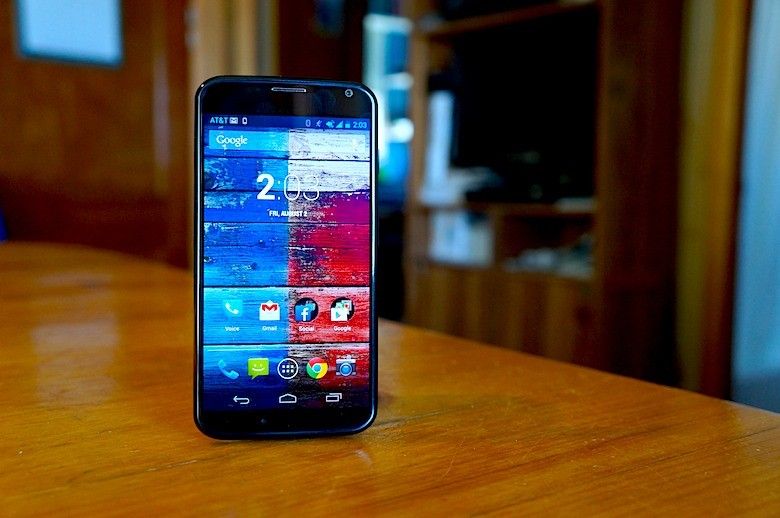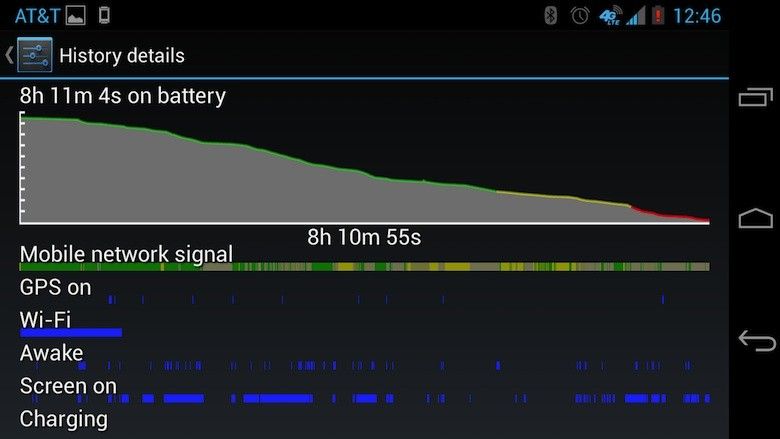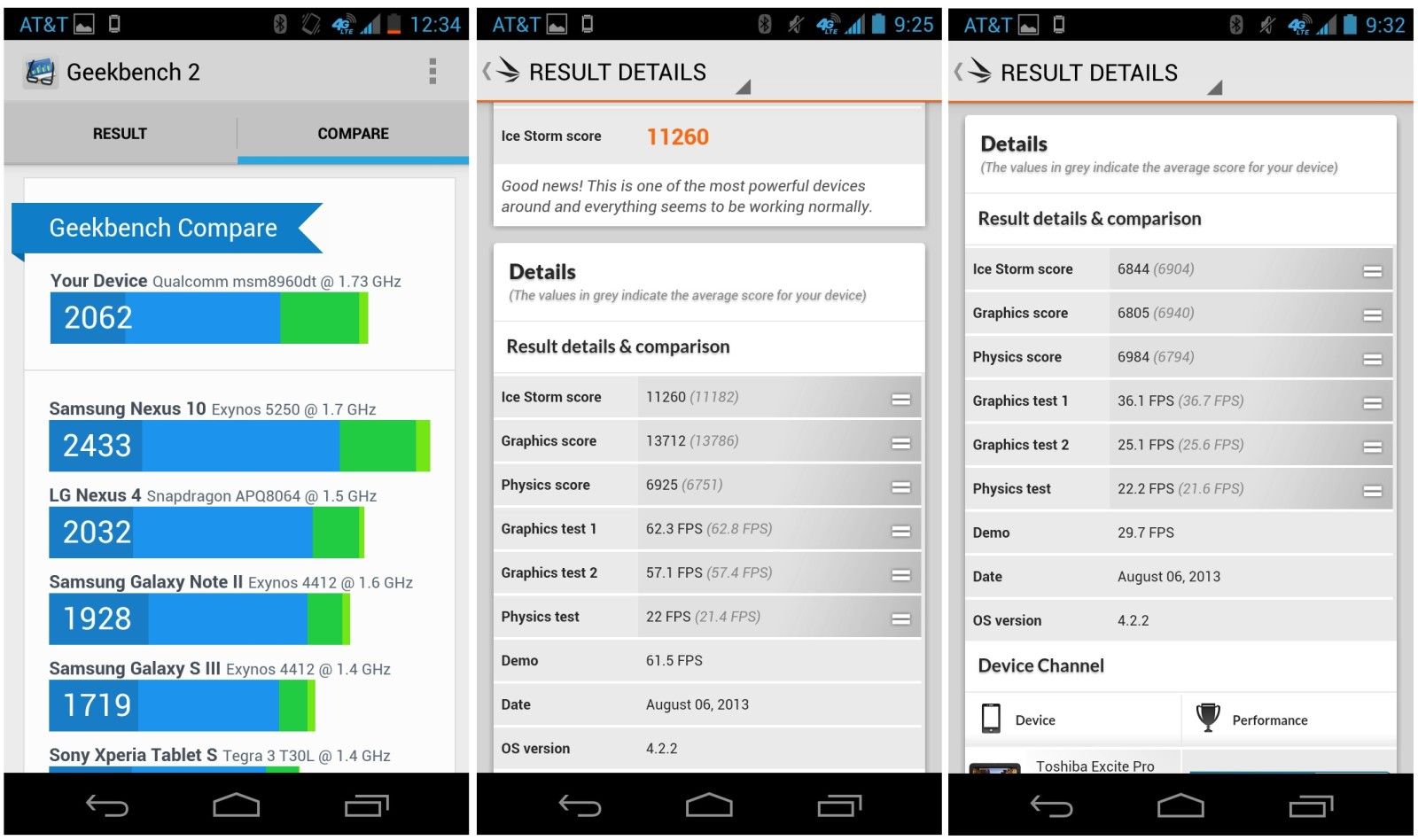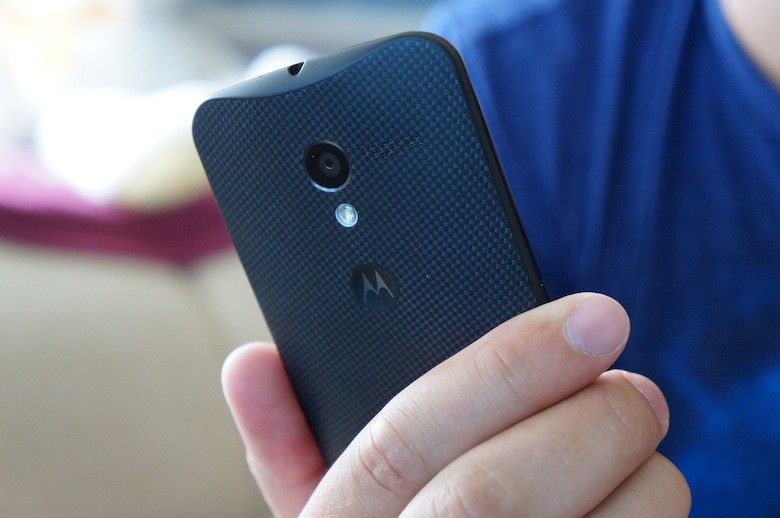“Ah, so that’s the way a phone should work.”
That’s just one line from a series of company-crafted snippets on Motorola’s official website for the new Moto X, and it’s a great encapsulation of the company’s intent behind the new flagship smartphone. But the Moto X isn’t just another spec-laden super-device; it’s a petite handheld with modest metrics that tries to leverage its thinking power better. It’s an attempt at a smarter (instead of a beefier) smartphone that “operates on your terms.” And it comes in a bevy of colors with matching accessories to make sure you can “fit right in,” even when you’re “standing right out.”
The whole “it’s the experience, not the specs” angle has been seen before, of course, and it’s a potent argument: Apple’s iPhone is probably the most successful example of this applied philosophy, and it’s impossible to dispute its success. Windows Phone has (finally) started seeing some growth partially due to the same approach: it doesn’t matter what’s under the hood, but whether or not the overall experience is enjoyable. Google’s acquisition of the venerable phone-builder Motorola has provided the company with the perfect opportunity to try its own spin on the tactic. With the Moto X, Google is trying to change the Android conversation from “how much bleeding edge tech can we shove on a phone” to “how can we design a phone to solve real user problems?”
Does this tactic shift work in Google’s favor? Can the Moto X really become a kind of iPhone for the Android world? More importantly, is it something you should consider buying? Read on to find out.
Videos · Specs/Hardware · Software · Camera · Performance
Pricing/Availability · Conclusion · Scored For Me
•
Video Review
Specs & Hardware
Let’s put on our detective hat for a minute. If a company is doing its utmost to shift the conversation away from specifications, it follows that we should check up on those specs out to see just what’s being omitted. Since this also has the effect of getting the wall-o’-numbers out of the way early, let’s take a peek inside the Moto X’s engine room to see what’s powering the new device. (If you’re not the spec type, just skip on down past the next paragraph and we’ll start talking normally again.)
The Moto X gets its processing ability from a unique hardware array Motorola is calling the “X8 Mobile Computing System.” It’s a nontraditional setup in that it uses an optimized Qualcomm Snapdragon S4 Pro (Krait) mated to an Adreno 320 GPU and two additional, specialized cores: one for natural linguistics processing and the other for “contextual computing.” To the kind of people who like to play the “my phone’s better” game in comment sections, that S4 means the Moto X is a dual-core dinosaur – but to the folks who pay attention, it’s a highly specialized device built with a specific performance range in mind. The folks over at Ars Technica have a great rundown on what this specific chipset is and isn’t capable of; for our purposes, it’s enough to say this is a very intelligently designed system, and it enables some pretty cool functionality which we’ll talk about in a second. The X8 system is backed up by 2 GB of RAM and either 16 or 32 GB of storage, depending on which model of the Moto X you spring for. No, that storage isn’t expandable via MicroSD, but Google does furnish X buyers with 50 free gigs of Google Drive storage for two years, which helps to soften the blow somewhat.
Enough about the numbers. Let’s talk build quality.
Performance
Thankfully, the Moto X makes up for its optical deficiency in nearly every other performance regard. Despite the much-maligned “midrange” processor, the software is incredibly snappy, with near one-to-one responsiveness across the entire interface. Menus flick, browser pages slide, and launchers expand and retract with a liquid smoothness rivaled by few in the Android space. The only place where the phone feels a bit pokey is when it’s executing specialized and processor-intensive tasks, like stitching panorama photos together.
The Moto X also delivers one of the best voice-calling experiences we’ve ever had on a smartphone. Not just an Android phone, mind you, but a smartphone, period. The phone’s rounded casing and finger-dimple make holding it to the ear a very comfortable affair, and the earpiece generates a nice, loud sound with the warm, comforting sidetone Motorola fans know well. During our five-day test period, the X’s three-microphone CrystalTalk noise reduction made us audible over the whipping wind of an open car window on the highway, and even over the roar of a boat engine six feet away. The only complaint our callers had was that the sound from our end sounded too quiet.
Motorola claims an endurance rating of 24 hours of “mixed usage” for the Moto X between charges, a bold claim that made us wonder just what was going on inside the phone’s embedded 2200 mAh battery. It turns out the answer is “nothing special,” as we were only able to get 12-15 hours from the device between charges with moderate-to-heavy usage. Granted, that’s in a fringe coverage area alternating between LTE and 3G fairly frequently, with a lot of photo-taking thrown in, and 15 hours under those conditions is actually quite a feat.
Still, Motorola said 24 hours at the NYC launch event, and made a big deal of clarifying that that figure took LTE and all the fancy new features into account. Maybe that claim was dreamed up by the same folks who shaved 3 or 4 grams off the actual weight of the device on the spec sheets – who knows. In any event, while the phone’s endurance isn’t as legendary as Motorola claims, it’s still quite impressive. Road warriors should feel reasonably comfortable taking this phone on a long jaunt or two between charges.
Pros
+ Comfortable, durable build quality
+ Elaborate customization options
+ Innovative, valuable features
+ Excellent voice performance
+ Top-notch software responsiveness
Cons
– Camera delivers sub-par color reproduction
– Not all new features are fully baked
– Some customization options are carrier exclusives
Pricing and Availability
The Moto X will be available on all four U.S. national carriers later this month, with rollout moving to smaller carriers through the beginning of September. The device will be made available to other countries later in the year, with variants such as the wooden line and special North America and Verizon Wireless developer editions coming later on as well. All carrier variants will feature unlockable bootloaders.
Interested buyers can sign up for updates at Motorola’s website. The suggested retail price for the Moto X is $199.99 with a 2-year contract.
Conclusion
The Moto X isn’t necessarily what we expected when we learned of Google’s plans to reboot the Motorola brand. In some areas, like its underwhelming camera and subdued hardware design, the phone gives off a decidedly midrange vibe. In others, like its futuristic software features and best-in-class voice performance, it feels more like the high-end phone Motorola wants us to believe it is. Still, if you don’t care where your electronics are made, the price might be a little high.
But if you’re looking for a phone that bears the slogan “assembled in the USA,” now you have an option. If you’re looking for more than a handful of color and customization options on your smartphone, now you’ve got hundreds. If you’ve been wondering when Google’s platform would start sprouting some of the real-world usefulness its competitors have been churning out, without the hassle of a third-party UI on top, wonder no longer. The Moto X is here, and for better or for worse, it’s “Google’s iPhone.” If you think of yourself as a “regular person” and you’re looking for the best possible Android experience at a reasonable price, without all the frills, the Moto X just became your best possible option.









